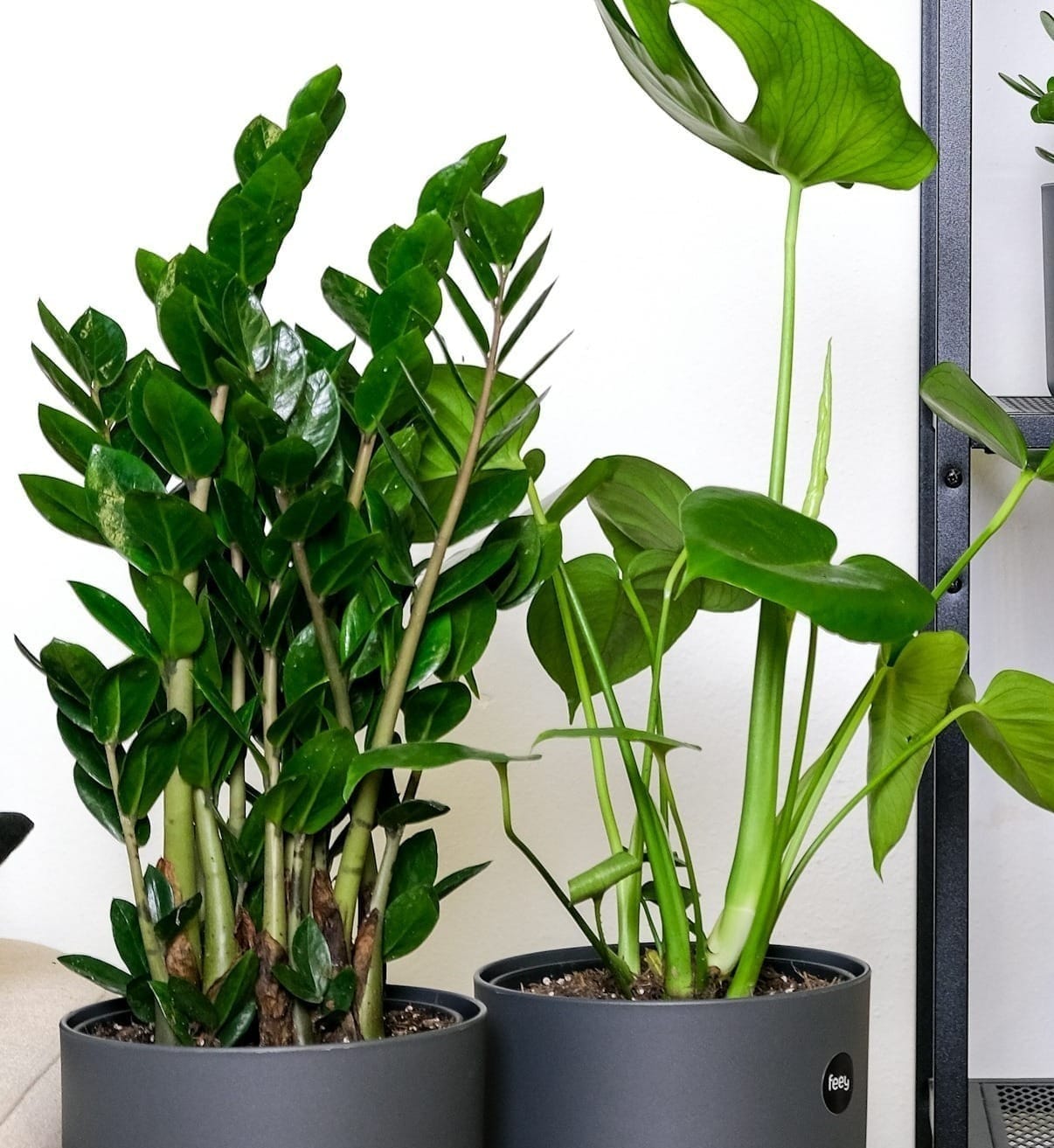Hello, fellow green thumbs! Are you ready to add some natural beauty and freshness to your home but feeling daunted by the thought of caring for finicky plants? Well, fear not because in this blog post we are bringing you the ultimate guide to houseplants for low light conditions. As much as we would all love large, sun-filled windows that are perfect for growing every type of plant imaginable, let's face it- not everyone has access to such luxuries. But that doesn't mean you can't have a gorgeous indoor garden! We have done our research and tested out various houseplants suited for the infamous grey skies of the UK, so sit back, make yourself a cuppa and get ready to meet your new leafy companions with the judge's verdict on which ones thrive in low light levels, indirect light and shady conditions.
What are we looking for in Houseplants for low light?
- When searching for the best low-light plants, there are a few key characteristics to consider.
- Firstly, the plant must be able to thrive in low light conditions; not every plant can survive without a healthy dose of sunshine.
- They should be able to adapt to the intensity of indoor lighting, which is often significantly less than natural sunlight. Secondly, low maintenance is a must.
- The ideal candidates require minimal care, meaning they can survive with infrequent watering and don't require special humidity conditions or soil nutrients.
- The goal is to find plants that not only survive but truly thrive, maintaining their lush, vibrant appearance even in less-than-ideal light conditions.
These types of plants are perfect for those with busy lifestyles or for those who simply enjoy the aesthetic of indoor greenery without the fuss of intricate plant care.
How did I choose these 5 low-light house plants?
Selecting these house plants was as meticulous as it was enlightening. As a seasoned professional with years of horticultural experience, I ensured each plant was tried and tested in my own home first. I observed their response to low light conditions over several weeks, noting their growth, leaf condition, and overall health. Additionally, I consulted with fellow professionals in the field - botanists, gardeners, and even plant shop owners, gathering their invaluable insights and real-world experiences with these plants. Their expert advice, combined with my personal observation and professional know-how, contributed to the careful selection of these resilient and beautiful houseplants, perfect for low-light conditions.
Products
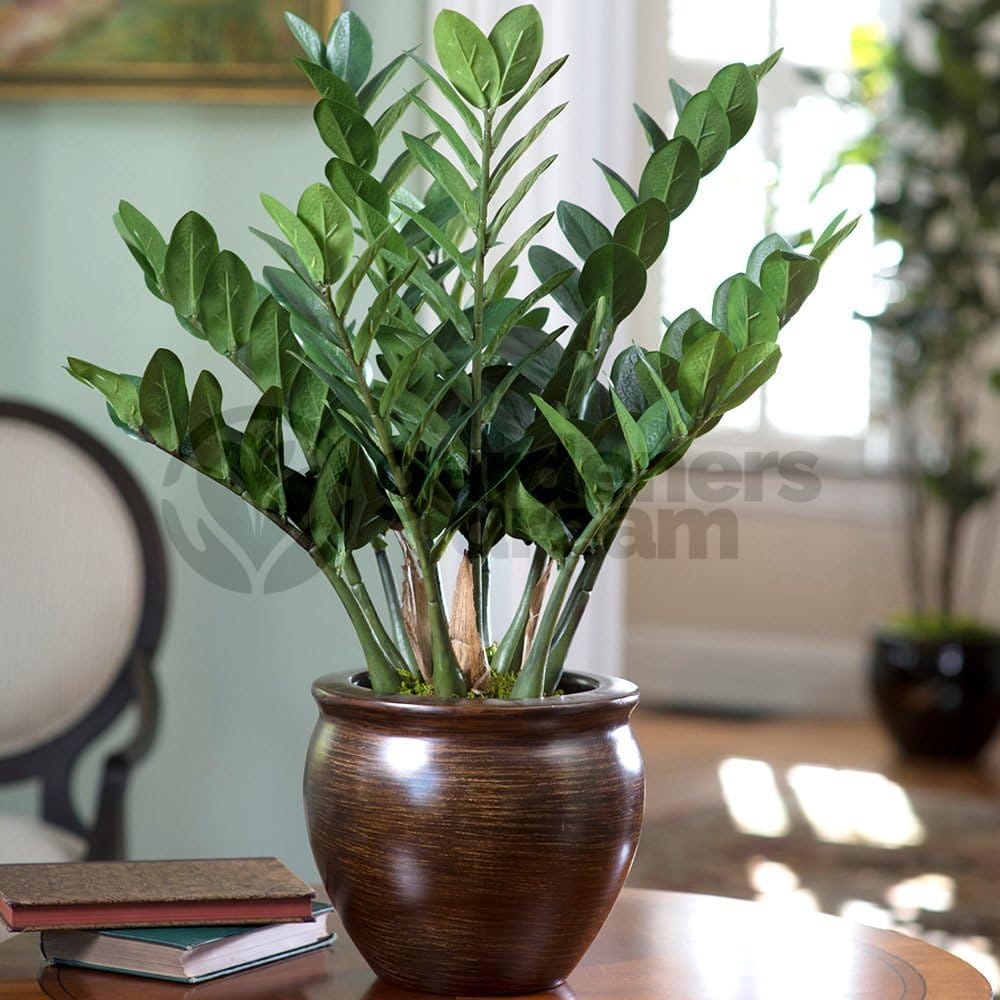
ZZ Plant (Zamioculcas zamiifolia)
"Embrace Effortless Greenery: The ZZ Plant Thrives in the Shade, Making Plant Care a Breeze."
- Hard to kill, high style - The ZZ plant, also known as the Zanzibar gem, is perfect for those who want to add a touch of greenery to their home without dedicating hours to plant care. Its glossy, dark green leaves and tall height make it a statement piece in any room.
- Adaptable and durable - Unlike many other plants, It can thrive in low indirect light, and medium light conditions and only needs minimal watering. This makes it perfect for busy professionals or anyone with a hectic lifestyle. Plus, its tough waxy leaves can withstand even the most forgetful waterers.
- Fresh from Africa - Native to East Africa, this plant brings a touch of exotic beauty into your home. Its deep green leaves are so pristine that they're often mistaken as artificial. Add a bit of African flair to your space.
- Toxic never looked so good - While we don't recommend pets or you eating them, it's safe to say that its bright green leaves will delight you. With its yellow and green flowers and unique leaf shape, this plant is toxic to humans and pets but completely mesmerizing to look at.
- Toxic to pets and children if eaten
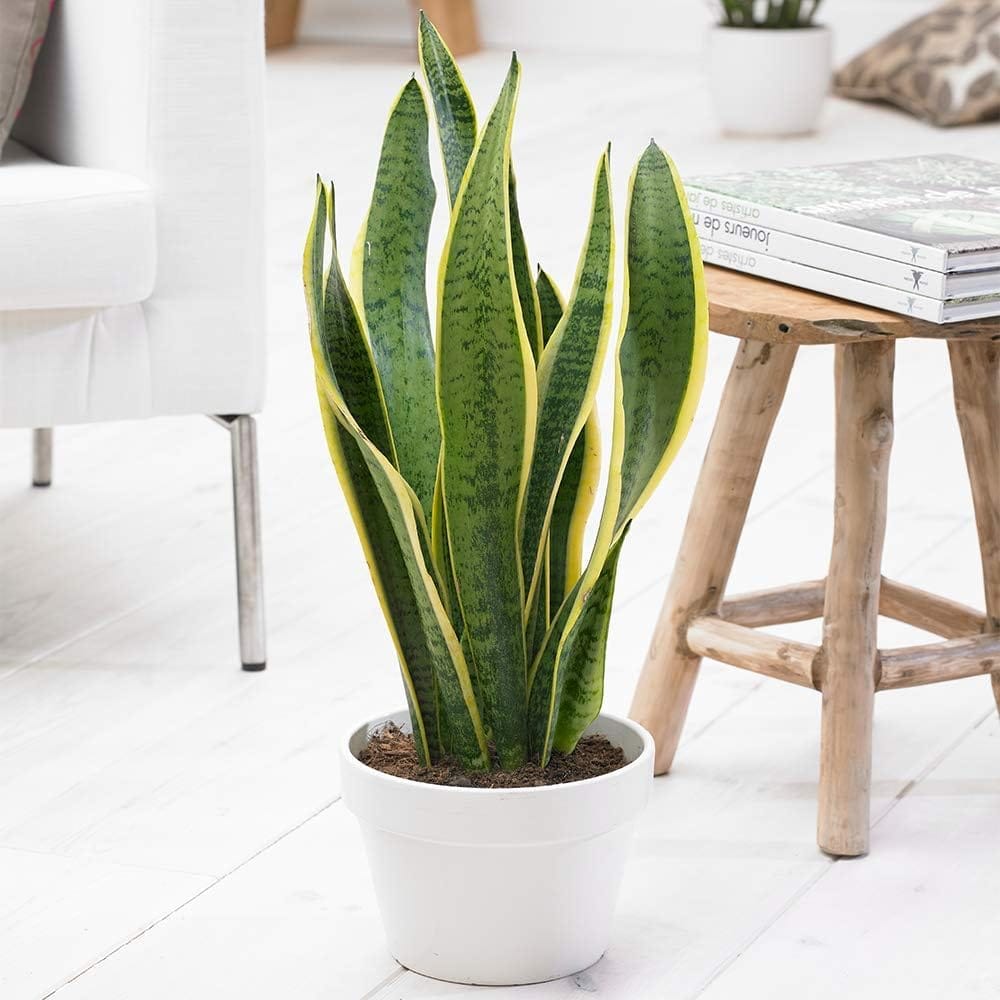
Sansevieria Laurentii - Snake Plants (13cm Pot)
"The Stalwart Sansevieria: Effortlessly Elegant and Remarkably Resilient, Perfect for the Modern Home."
- Sansevieria Laurentii known as Mother in Laws Tongue or the Snake Plant, is an excellent choice for your house/officer, and an easy-to-grow houseplant.
- Renowned for its striking decorative foliage, upright elegant leaves and resilience to neglect, thriving in low light and requiring infrequent watering.
- Snake plants will grow slowly and last for years and you can always pot it on so it becomes a family member.
- The Snake Plant has a Royal Horticultural Society (RHS) that gave it a Garden Merit Award, considered a well-regarded award by professionals. One of the best indoor plants.
- Plant Type: Succulent native to Africa
- Pot Size: 12cm
- Plant Height Supplied (inc. pot): 15-25cm
- Colour: Green and white stripes
- Position: Full Sun, Semi Shade. Avoid direct sun. ideal for windowsills away from bright sunlight and in bright rooms and low-light rooms.
- Pet Friendly: Avoid animals eating the leaves
- low maintenance plant easy to grow and drought resistant and slow growing.
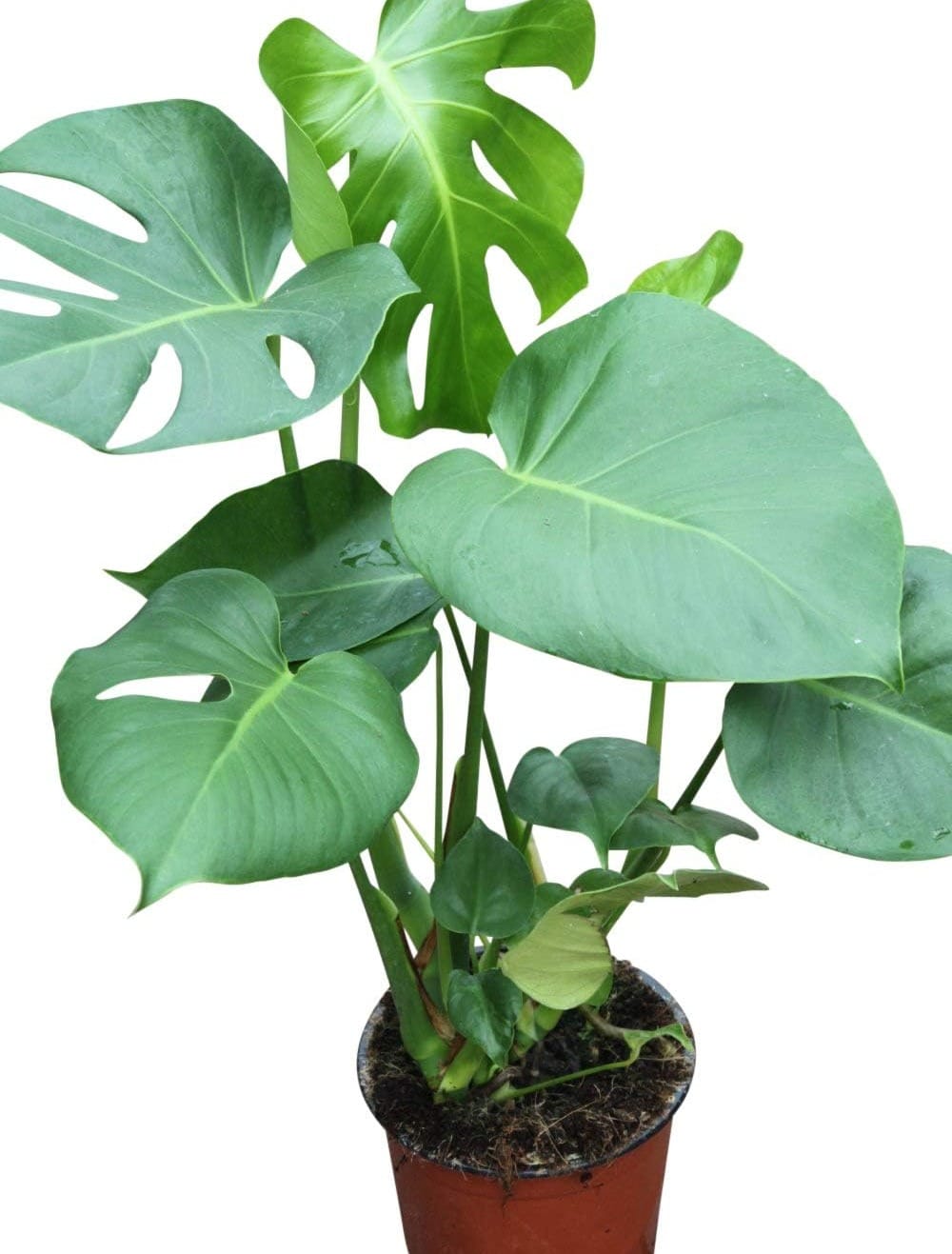
Swiss Cheese Plant (Monstera)
"Swiss Cheese Plant (Monstera) - A slice of tropical paradise, effortlessly adding a dramatic splash of green to your space."
- Ideal for any home or office - Bring a touch of nature indoors. They arrive approx. 30cm tall and have instant impact these vibrant plants are the perfect size for any space. Plus, they're incredibly easy to keep, making them a great choice for busy lifestyles.
- A low-maintenance plant - Don't have a green thumb? No problem! they are resilient and easy to care for. Just place in a partially shaded spot and water when the soil is almost dry. They'll be thriving in no time!
- Gorgeous glossy foliage - Want your plant to stand out on social media? Our Swiss Cheese Plants have unique holey leaves that are sure to garner attention. Keep them looking extra glossy and healthy with our olive leaf shine spray, available on Amazon.
- Happy in any temperature - With a minimum temperature requirement of just 50°F, this hardy plant can thrive in a wide range of temperatures. Keep it comfortable between 15°C and 30°C for best results.
- Get your support from us - Plants may need physical support from a moss pole, but we've got your emotional support covered! Relax and enjoy the beauty of nature with this low-maintenance houseplant by your side.
- Mildly Toxic to Animals.
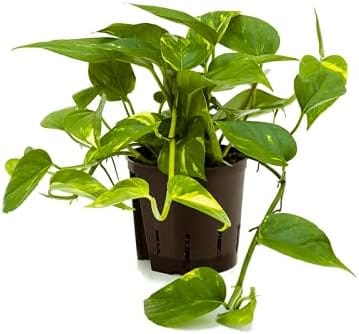
Devil's Ivy
Devil's Ivy: Effortlessly charming and enduringly adaptable, it's the quintessential houseplant for lush, green living.
- introducing this low light-loving houseplant- Also known as Epipremnum, Devil’s Ivy, or Pothos. From the prestigious family of Philodendron Scandens. Spruce up your home or office, Devils ivy is one of the best low-light indoor plants.
- This beautiful plant is easy to care for and is tolerant of different environments, especially indirect light and lower light conditions, making it an ideal choice for any room in your home. Its large, glossy green leaves with cream and yellow streaks and blotches are not only aesthetically pleasing but also add to its air-purifying qualities. With its standard 12cm diameter nursery pot, it’s ready to be displayed in your living room, kitchen, bedroom, or even bathroom.
- It prefers indirect light, but can also tolerate lower light levels without losing its beautiful variegation. Just be sure to avoid exposing it to direct sunlight, as this can harm its leaves. When it comes to watering, this plant is drought-tolerant but does best when the soil becomes slightly dry. Remember, too much water can be harmful, so be sure not to overwater your Pothos.
- As for temperature, Devil's ivy is happy in normal room temperatures, ranging from 10-24°C. Be sure to avoid colder temperatures and cold drafts, as this can negatively affect the plant's growth. But don’t worry, with minimal care and attention, your Pothos will thrive in any environment.
- Not recommended for pets/children to eat
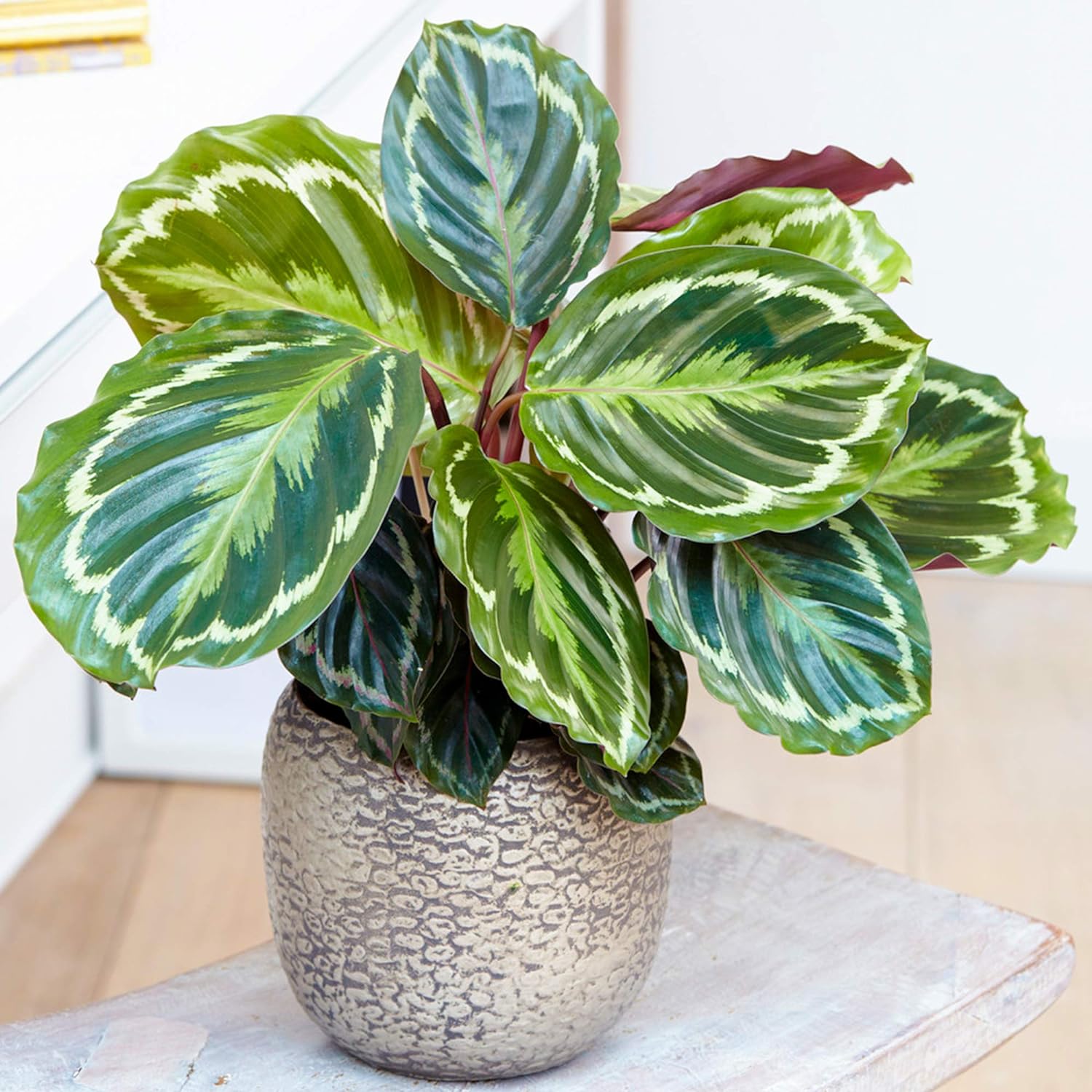
Calathea Medallion
Calathea Medallion: Experience the lush tropics in your living room, where beauty meets low maintenance.
- Variegated foliage colouring - The evergreen Calathealow-light-loving Medallion boasts an impressive display of various shades of green, adding a touch of elegance and trendiness to any room. Its eye-catching foliage is sure to impress.
- One of the best low-light indoor plants- With the ability to thrive in different settings, this plant is versatile and easy to incorporate into your home decor. From bathrooms to offices, it will add a touch of beauty wherever it goes.
- Air-purifying and humidity-loving - Not only does the Calathea Medallion bring life to your living space, but it also helps in purifying the air and thrives in high humidity levels. It's a win-win for both you and the environment. (actual purifying effects on air are extremely minute even though a lot of retailers promote this)
- Low-maintenance care - Don't have a lot of time on your hands? No problem! This plant can be easily cared for with quick, regular check-ins. Simply follow our simple care tips and watch your Medallion flourish.
- A striking focal point - With its large decorative leaves adorned with silver markings against an emerald green background, this plant demands attention and makes for a beautiful centrepiece in any room. Add it to your collection today for a touch of Brazil in your home!
- Pet friendly
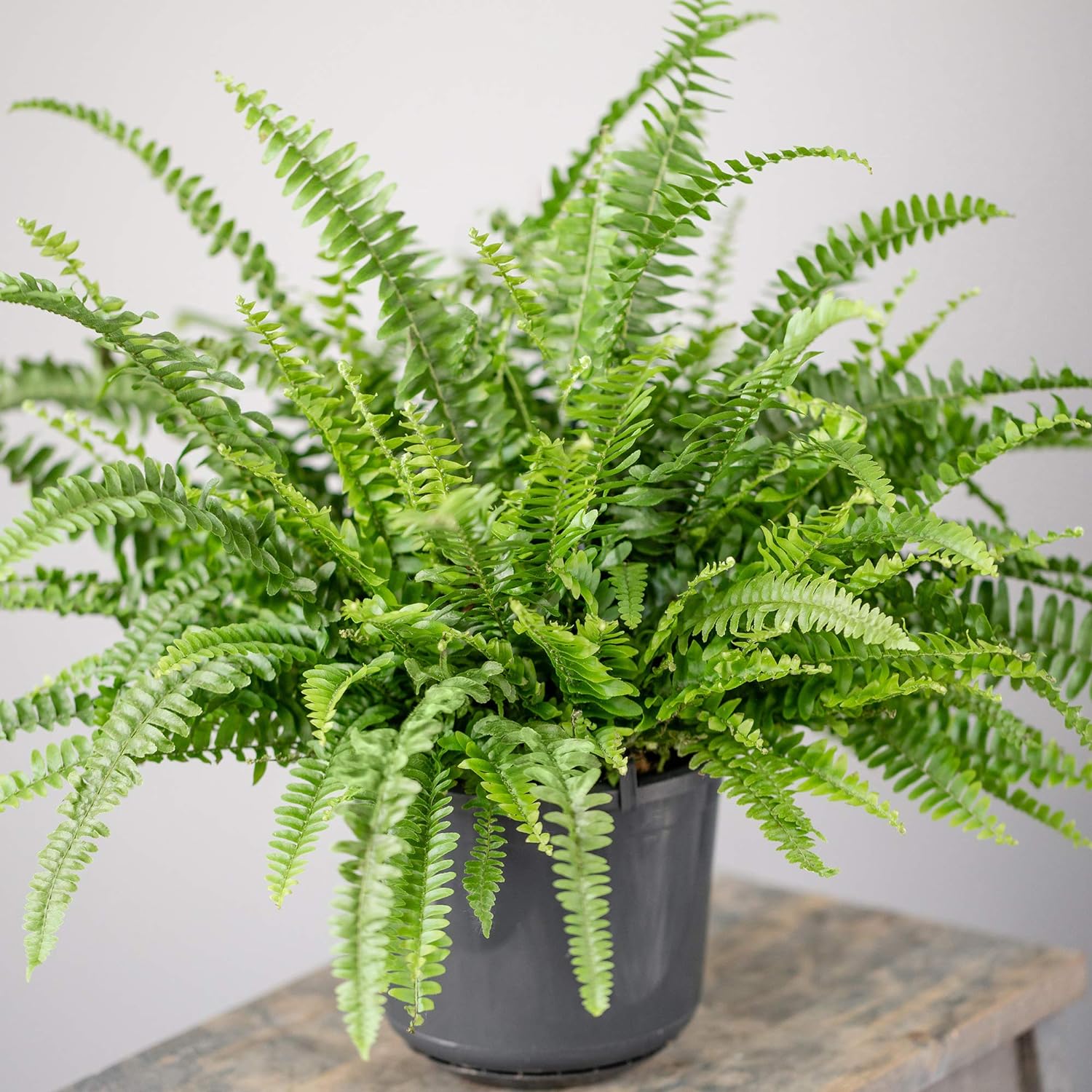
Boston Fern
Breathe life into your home with a touch of lush greenery that's as resilient as it is captivating.
- Nature's authentic beauty - Bring a piece of ancient charm into your home with our Boston Fern. This hardy plant dates back thousands of years and will add a touch of elegance to any room.
- Thrives in your bathroom - Looking for a plant that can handle steamy environments? Look no further! Our Boston Fern loves bright, indirect light and thrives in high humidity, making it the perfect addition to your bathroom.
- Standout factor - The frilly fronds of our Boston Fern are sure to catch your eye. With their unique sword-like shape, they add a touch of sophistication to any space.
- One of the best indoor plants - Our Boston Fern is known for its adaptability and can thrive in warmer, homely households. It's the perfect choice for anyone looking for an easy-to-grow houseplant.
- Simple yet unique - Add a touch of uniqueness to your home with our Boston Fern. Its simple but striking appearance will bring life and character to any room.
- Please note: Plant height is approximate and pot is not included.
- Pet Friendly
Judges Verdict
So there you have it, fellow green thumbs! Whether you live in a city apartment with minimal natural light or a cosy countryside cottage with limited windows, these 6 low light indoor plants are sure to thrive and bring life to your home. But don't just take my word for it – put them to the test yourself! As they say, the proof is in the pudding (or should I say the plants). And remember, don't be afraid to experiment and try different combinations of these resilient tropical plants. Who knows, you might even discover a new favourite among them. And when you do, share your experiences and photos on social media using #LowLightHouseplants - let's spread the love for these often underestimated wonders of nature. With this ultimate guide and our carefully selected low-light indoor plants recommended, there's no excuse for not having a flourishing indoor garden! So go ahead and give them a go – trust me, you won't regret it. Happy planting!
FAQs
Can these plants tolerate low light or do they need some sunlight?
These plants can truly thrive in low-light conditions, making them ideal for less sunlit spaces. However, they would also appreciate some indirect sunlight if it's available. Sudden changes in light conditions can be harmful, so if you decide to move them closer to a window, do so gradually.
How often do these plants need to be watered?
The watering frequency for these plants largely depends on the specific plant species and the conditions of your home. However, a general rule of thumb is to water them when the top inch of the soil feels dry to the touch. Overwatering can be harmful, so it's better to err on the side of caution and let the soil dry out a bit between waterings.
What type of soil is best for these plants?
Well-draining soils, such as those rich in peat moss or perlite, usually work best. These soil types help prevent waterlogged conditions, which can lead to root rot, and ensure that essential nutrients are readily available for the plant's growth and health.
Do these plants need any special care?
Generally, these low-light plants are quite low-maintenance and do not require any special care beyond regular watering and occasional fertilising. However, it's important to maintain a consistent environment as sudden changes in temperature or light conditions could stress them. Regularly dusting the leaves can also help the plants photosynthesize more efficiently.
How can I tell if my plant is receiving enough light?
Gauging if your plant receives sufficient light can be somewhat intuitive but there are a few signs to watch out for. If your plant is getting the right amount of light, it will exhibit robust and steady growth, and the colour of the leaves will be a vibrant, healthy green. If your plant isn't getting enough light, you might see poor growth, yellowing or dropped leaves, or the plant might start to 'stretch' towards the light source, indicating it's trying to get more light. Remember, even though these are low-light plants, they still require some light to photosynthesize and grow. Observing your plant's behaviour and response to its environment is key to ensuring it gets enough light.
Can plants survive in dark rooms or do they need some natural light?
While these plants are indeed adapted to lower indirect light conditions, they do require some level of light for photosynthesis - no plant can survive in complete darkness. Therefore, even in a room that doesn't receive much natural light, there should be some light source, artificial or otherwise, for the plant to survive and grow. If you're considering placing a plant in a room with very little natural light, ensure there is at least ambient light from nearby rooms or occasional artificial light. Fluorescent light or LED lamps can be used to assist.
Can plants survive in dark rooms or do they need some natural light?
While these plants are indeed adapted to lower indirect light conditions, they do require some level of light for photosynthesis - no plant can survive in complete darkness. Therefore, even in a room that doesn't receive much natural light, there should be some light source, artificial or otherwise, for the plant to survive and grow. If you're considering placing a plant in a room with very little natural light, ensure there is at least ambient light from nearby rooms or occasional artificial light. Fluorescent light or LED lamps can be used to assist.
Are there any plants that can thrive in both low light and bright light conditions?
Yes, indeed certain plants can adapt to both low-light and bright light conditions. Some examples include the ZZ plant (Zamioculcas zamiifolia) and the Snake plant (Sansevieria trifasciata). These plants are hardy, require minimal care, and can adjust to a broad range of lighting conditions, making them ideal for various indoor environments.
Can these plants be placed in direct sunlight or do they only thrive in indirect sunlight?
The plants chosen can tolerate a wide range of light conditions, they typically prefer indirect light. Direct light can be too intense for these types of plants, potentially causing leaf scorching. Thus, it's best to place them in an area with indirect light and shady conditions and avoid direct sun.
What are some common mistakes people make when caring for low-light-loving plants?
A few common mistakes people make when caring for low-light plants include overwatering, neglecting humidity requirements, and expecting fast growth.
- Overwatering: This is perhaps the most common mistake. Remember, low-light plants generally require less watering than their sun-loving counterparts. Overwatering can lead to root rot and other diseases.
- Neglecting humidity requirements: Many shade-loving plants are native to tropical environments and thrive in humid conditions. Ignoring this requirement can lead to leaf browning or wilting.
- Expecting fast growth: Low-light plants often grow at a slower pace compared
Are there any plants that can thrive in both low light and bright light conditions?
Yes, certain plants can adapt to low-light and bright-light conditions. Some examples include the ZZ plant (Zamioculcas zamiifolia) and the Snake plant (Sansevieria trifasciata). These plants are hardy, require minimal care, and can adjust to various lighting conditions, making them ideal for various indoor environments.

